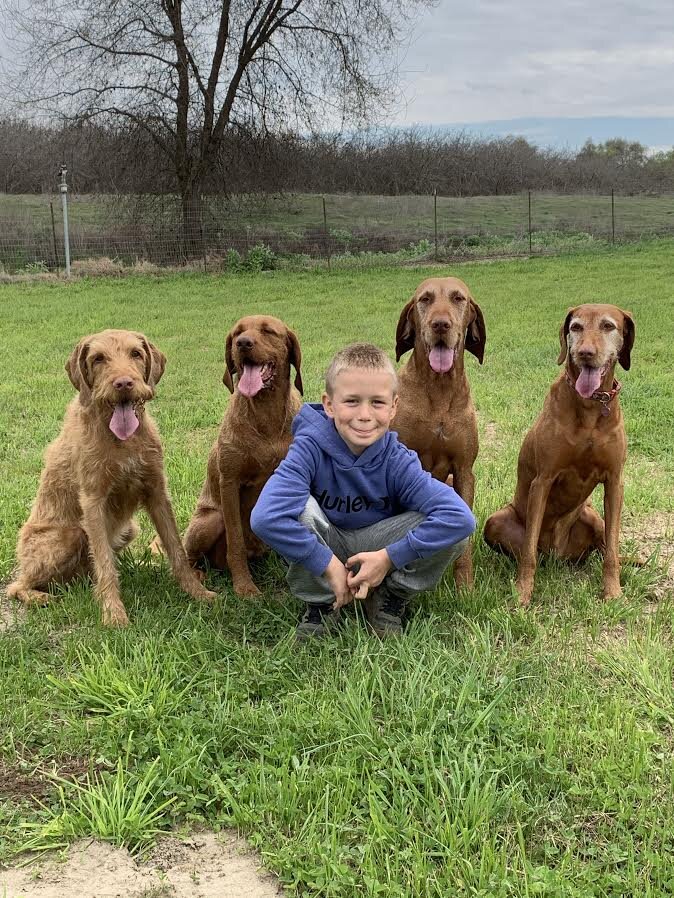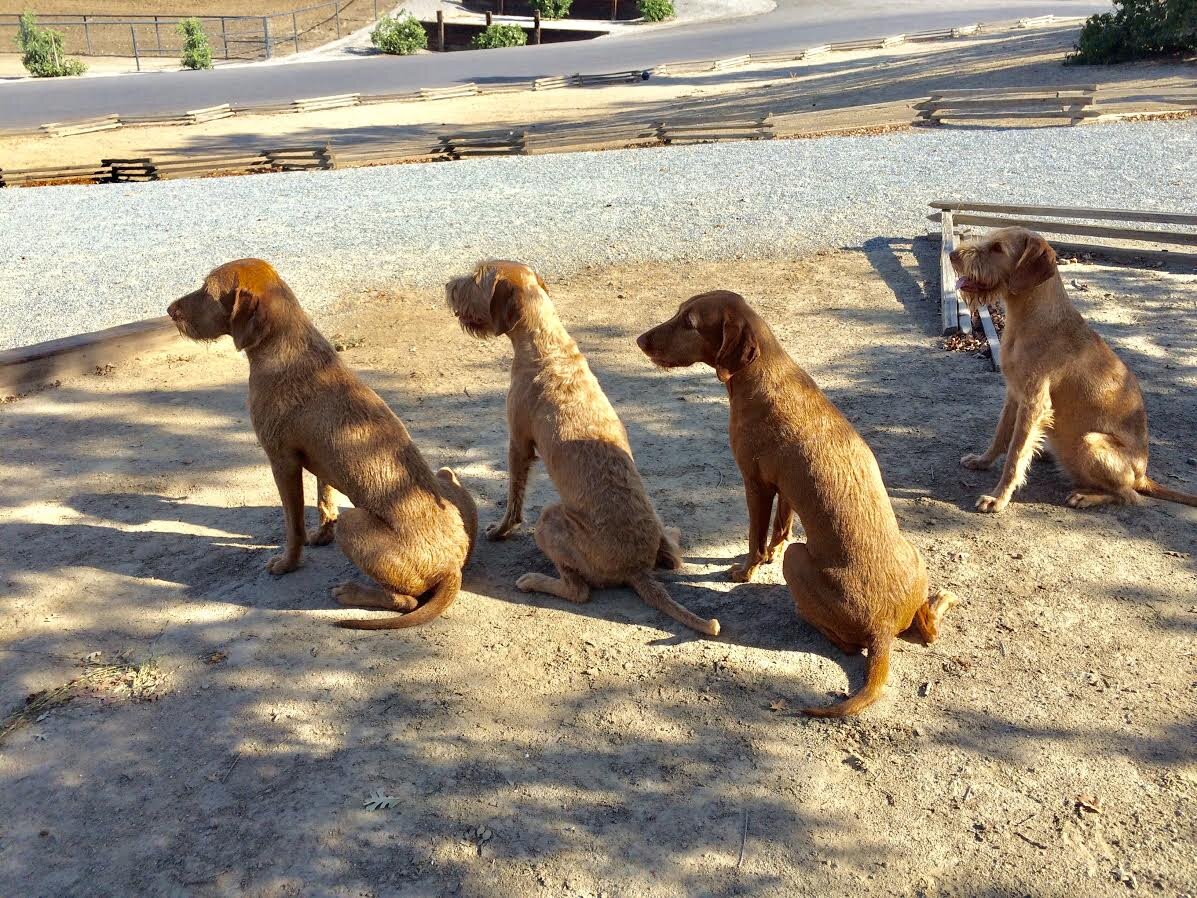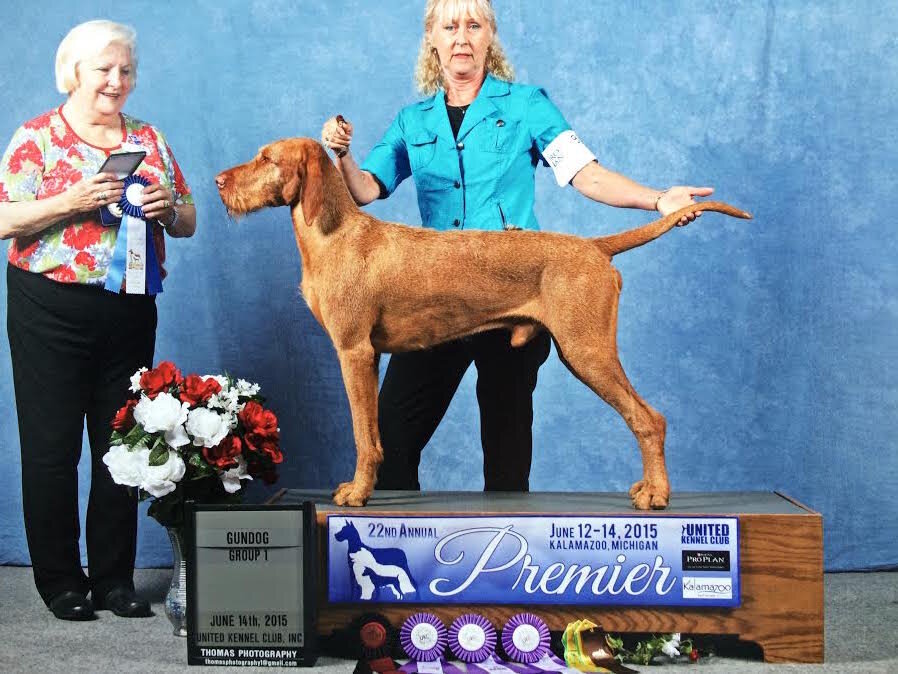
The Wirehaired Vizsla
This is a very active Breed, which may be perfectly suitable for some but not suitable for everyone. They have a high intelligence, are active, require exercise and are sensitive to harsh handling. Without proper exercise to burn energy they may develop behavioral challenges. They require much attention and are extremely trainable, retaining much of what they learn in a short period of time. These dogs are very versatile in their ability to acquire accomplishments in an unlimited array of venues and sports. They are not dogs to be left in a kennel run or spend their days alone in a backyard.
Although they are active outdoors, generally they are also content to lay at your feet while resting indoors. They make wonderful family dogs. However, children must be calm and be taught to respect a dog as a living sensitive being in order to form a trusting relationship with a dog. A puppy must also be taught to not treat their human companions, specifically children, as equal littermates. A puppy needs to learn respect for children as well. They should not be allowed to bite and jump on children because children are small and easy to reach. These dogs make calm and gentle companions. We often refer to them as “Velcro dogs.” They seem to feel the need to be near and touching their people; knowing the whereabouts of their people at all times.
They generally require very little discipline and respond well to voice tone. The Wirehaired Vizsla is a natural upland bird hunter’s dream. Quartering close by their hunting companion, they will work within walking distance of voice commands, keeping the hunter within their peripheral vision.
The WHV is kin to the smooth Vizsla. However, they are two separate breeds. The smooth Vizsla is an essential breed immediately behind the Wirehaired Vizsla along the German Wirehaired Pointer. The Wirehaired Vizsla has attributes from both breeds. There are varying degrees in the wirey coat from slightly wirey to heavily wired. It is difficult to know at birth to what degree a coat will develop. A coat may take up to three years to fully develop in some dogs while the coat may mature earlier in others. This breed is not considered as hypoallergenic.
The Wirehaired Vizsla was first introduced into the United States in 1970. They were developed in the 1930s by Vasas Jozef, owner of the Csabai Vizsla Kennel along with Gresznarik Laszlo, who owned the de Selle German Wirehaired Pointer Kennel. Their goal was to produce a dog that combined the color of the Vizsla with a heavier coat and a more substantial frame, better suited for working in cold weather, retrieving from the icy water and punishing terrain.
Two Vizsla females (Zsuzsi and Csibi), both of whom combined excellent, pedigrees and good working ability, were selected to breed with a completely liver colored German Wirehaired Pointer sire (Astor von Potat). Zsuzsi’s sire was known to produce offspring with longer coats. The best of Zsuzsi’s and Csibi’s offspring were selected and bred together. Dia Selle was born, the first Wirehaired Vizsla to be exhibited. She had a similar body to the shorthaired Vizsla with the head shape of the German Wirehaired Pointer. While her coat was not rough or thick enough, she was the promising beginning of the new Wirehaired Vizsla.
Anecdotal history suggests the added infusion of Pudelpointer, Bloodhound and Irish Setter blood during the WWII era when other Hungarian kennels also became involved in the development of the new breed.
The Wirehaired Vizsla was recognized in Europe by the (FCI ) Federation Cynologique Internationale under the Hungarian standard in 1986. It was also recognized by the (KC) Kennel Club in United Kingdom, (UK). The breed was introduced into North America in the 1970s and was first recognized by the Canadian Kennel Club in 1977 and the North American Hunting Dog Association in 1986. The breed was recognized by the (UKC) United Kennel Club in 2007. It was recognized by the Australian Kennel Council in 2007. The Wirehaired Vizsla is also recognized by (ARBA) American Rare Breeds, as well as American Field (Field Dog Stud Book) registries. After admission in the (AKC) as American Kennel Club Foundation Stock Service (FSS) in 2008 and allowed to show in the AKC miscellaneous class in 2011, the breed was inducted into AKC formally as the Wirehaired Vizsla Breed in 2014. At that time there were less than 600 Wirehaired Vizslas in the US and up to 3000 worldwide.
Please refer to the following Breed standard links below for a full description of the Wirehaired Vizsla in type, temperament and physical structure.
Federation Cynologique Internationale Standard listed as the Hungarian Wirehaired Pointer
“The love of a dog is a pure thing. He gives you trust which is total. You must not betray it.” - M. Houellebecq





